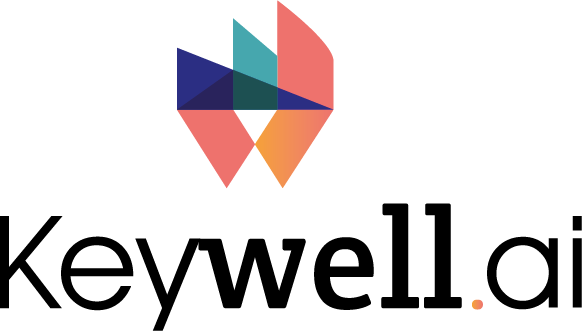Since the enforcement of price transparency laws in July 2022, health plans have been required to publish negotiated contract rates and out-of-network prices for services and goods between plans and providers. This includes in-network negotiated rates and out-of-network allowed amounts.
While this mandate aims to empower consumers and curb rising healthcare costs, it has also created opportunities for healthcare organizations to gain competitive insights. However, the resulting complex web of information is difficult to navigate effectively.
Keywell has made this data truly useful through our proprietary Relevance Score. This score transforms raw, unwieldy data into actionable intelligence.
Let’s discuss the current challenges in price transparency data, and explore Keywell’s unique solution to existing data management issues.
The Current State of Price Transparency Data
Two years post-implementation, the promise of price transparency is hindered by data complexity.
Healthcare decision makers face numerous challenges when using price transparency data, including overwhelming data volumes, incompatible formats, reporting inconsistencies, geographic discrepancies, irrelevant procedure codes, and confusing identification structures.
These challenges render the data nearly useless without advanced processing and analysis tools. Once the data is processed, many rates are irrelevant or inaccurate, stemming from variation in claims adjustments and payer reporting methodologies. Attempting to filter these at more than a surface level requires advanced algorithms and incorporation of third-party datasets to benchmark and evaluate the rates.
Two years post-implementation, the promise of price transparency is hindered by data complexity.
Healthcare decision makers face numerous challenges when using price transparency data, including overwhelming data volumes, incompatible formats, reporting inconsistencies, geographic discrepancies, irrelevant procedure codes, and confusing identification structures.
These challenges render the data nearly useless without advanced processing and analysis tools. Once the data is processed, many rates are irrelevant or inaccurate, stemming from variation in claims adjustments and payer reporting methodologies. Attempting to filter these at more than a surface level requires advanced algorithms and incorporation of third-party datasets to benchmark and evaluate the rates.
The Need for Data Refinement
The limitations of raw price transparency data present significant risks for decision makers. Unrefined data can lead to errors in pricing estimates of 67% or more in some cases, which can derail strategic planning and negotiations.
For instance, in the example below, analysis of the common evaluation and management code 99213 (for an established patient office visit of 20-29 minutes) reveals significant discrepancies. Cigna’s median rates differ by 47% and average rates by 67% compared to refined data.
|
Billing Code |
Payer | Difference in Median (%) | Difference in Average (%) |
|
99213 |
Cigna |
47% |
67% |
|
99213 |
Aetna | 29% |
42% |
| 99213 | United Healthcare | 26% |
19% |
|
99213 |
Blue Cross Blue Shield | 5% |
11% |
| 99213 | TPA_or_Other | 2% |
6% |
We found similar results across radiology, surgical, and other specialty codes, which underscores the widespread nature of this issue in pricing transparency data
Introducing the Keywell Relevance Score
The Keywell Relevance Score employs a comprehensive A, B, C, D grading framework to rate the relevance and reliability of each rate/data point provided by health plan payers. The score is applied to individual negotiated rate records, focusing on specific procedure codes, their associated prices, and provider-payer rate combinations.
A negotiated rate might be scored based on geographical accuracy, historical billing patterns, and data consistency. A rate that aligns well with these factors would receive a higher grade, while one that shows discrepancies might be downgraded.
For example, here are Austin MRI rates from United HealthCare Services with an A rating:
Here’s a sample of downgraded MRI rates for Austin. One reason for the lower rating is that they are outside the geographic area (even though they show providers in and around Austin).
This innovative approach offers users several key advantages:
- Dramatically improved accuracy in pricing estimates.
- More reliable aggregate measures.
- Considerable time and resource savings.
With the Keywell Relevance Score, decision makers also get full access to all data, including lower-scored “downgraded” rates, for comprehensive analysis.
Provider growth market leaders can harness the Pricelink data (with the Keywell Relevance Score) to identify services for which they are reimbursed lower than their peers and negotiate fair rates with payers. They may also use the data to evaluate new markets for growth and acquisition.
Health payers may use the data to identify payment outliers and evaluate market rates for their own networks as well as for health plan competitor networks.
Self-insured employers may use the data to monitor TPA network management and identify cost savings opportunities in network negotiated rates.
The Methodology Behind the Score
The Keywell Relevance Score’s robust methodology incorporates more than 20 distinct factors and algorithms to evaluate and refine price transparency data.
Key components of the scoring process include:
- Proprietary Keywell algorithms for identifying the most relevant rates.
- Integration of third-party datasets to enrich and validate information.
- Claims utilization data analysis to identify and remove “phantom” rates.
- Advanced statistical analysis and outlier detection for negotiated rates.
- Pattern recognition techniques to filter out and remove errors.
This multi-faceted approach allows the Keywell Relevance Score to sift through the complexity of raw price transparency data and deliver refined, actionable insights to healthcare decision-makers.
Precision-Driven Decision Making for Healthcare Organizations
In an industry where data accuracy can determine the success of strategic initiatives, the Keywell Relevance Score is an indispensable tool for healthcare leaders.
Raw data complexity shouldn’t impede your organization’s strategic initiatives. Contact us to learn how the Keywell Relevance Score can enhance your healthcare market analysis and decision-making processes.





